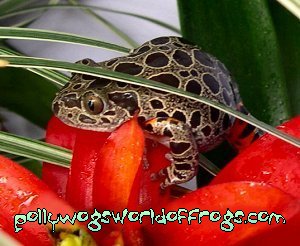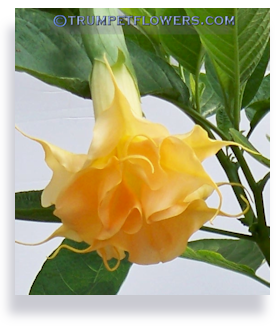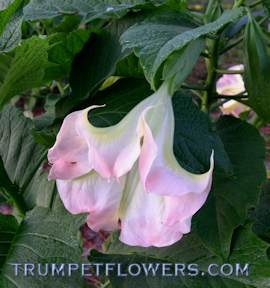Caresheet Red Legged Running Frog
 Kassina maculata, also called the red-legged running frog, grows to 3" long.
As the common name implies, they would rather "run" than hop.
These nocturnal frogs are primarily ground-dwellers, and found on the coastal
plains of Kenya south into the north eastern Republic of South Africa.
Their feet are not webbed, although they love to sit in shallow pools.
Their pupils are vertically aligned, like a cats', and the eyes are deep bronze to burnished gold in color.
Kassina maculata, also called the red-legged running frog, grows to 3" long.
As the common name implies, they would rather "run" than hop.
These nocturnal frogs are primarily ground-dwellers, and found on the coastal
plains of Kenya south into the north eastern Republic of South Africa.
Their feet are not webbed, although they love to sit in shallow pools.
Their pupils are vertically aligned, like a cats', and the eyes are deep bronze to burnished gold in color.
When the rains come to the savannas, these frogs will then congregate around the pools of water to breed. Their loud "quoick" sounds are repeated at long intervals during this rainy season. Eggs are laid in the waters of these temporary pools en-mass. They are usually adhered to vegetation that grows up from under the water.
Setup
Because the frogs are ground-lovers, give them a longer than taller tank. 29 gallon is good for two to four frogs. The substrate should include Scotts peatmoss and several hiding places (plastic "caves") as they naturally burrow in daytime. Very secretive and shy frogs, do not expect to see much of them without a red-light for evening viewing, as well as a quiet room with no distrations. This tends to bring them out. I place in a jungle sounds c.d. to help them adjust and feel like coming out once in a while so I can see them.
Make sure this frog receives a large sized pool with slightly moving water in which to soak. Place an airstone or sponge-type filter in it. When not hunting down the insects you've given them that night, they will be found soaking in the pool. Change the water daily if no filtration, and once every 3 days with filtration. This will keep ammonia build-up in the water from occuring, as they will also poop and pee in the water.
 Give them real or silk plants in the tank, with a screen-top. Lighting should have two
strip fluorescents of daytime light quality. (And that red-light for evening peeking by you)
Give them real or silk plants in the tank, with a screen-top. Lighting should have two
strip fluorescents of daytime light quality. (And that red-light for evening peeking by you)
Remove any uneaten bugs and poops daily. When you do your monthly house-cleaning, have a tall, clean tupperware with lid handy. Find them quickly, as they really do run fast ! Before you know it, they'll be up the glass and out of the tank! Place them in the tupperware while cleaning, watching for fingers when shutting lid and making sure you've washed your hands thoroughly first. Since we've broached handling here, don't make it a habit to pick this species up much. It will overly stress them.
Keep the hygrometer at moderate, or 60%, in winter and fall. In spring and summer, raise that to 70 to 75%. Temperatures should never go below 68° in evening. Daytime temps are between 78° and 84°.
Feed them fat white grubs, superworms, crickets, fly maggots and termites (if available).
Health concerns
 Because this frog lives among the grasses and reeds of a savanna,
he almost always comes to you with a variety of worms and parasites (w.c.). I usually have the frogs a month or three before they show up in the frogs' stool. Be on the lookout for this, and when/if it happens, destroy all bedding properly and treat the frogs. Taking a wormy stool to your vet will help him identify exactly which worm you're dealing with. See the Quarantine and Frog RX Care page for more on controlling and treating worms in frogs.
Because this frog lives among the grasses and reeds of a savanna,
he almost always comes to you with a variety of worms and parasites (w.c.). I usually have the frogs a month or three before they show up in the frogs' stool. Be on the lookout for this, and when/if it happens, destroy all bedding properly and treat the frogs. Taking a wormy stool to your vet will help him identify exactly which worm you're dealing with. See the Quarantine and Frog RX Care page for more on controlling and treating worms in frogs.
Do not handle this anuran unless absolutely necessary, and then use Proper procedures.
Further Onsite Help
Basic Frogcare (choosing healthy frogs, species mixing, feeding, etc.)
Vivariums (to establish and maintain, lighting, substrate ideas, etc.)
Quarantine (keeping
vivarium disease-free, how to set up quarantine tank)
Water 101 (How to establish & maintain high quality water)
Raising Insects (Info about raising your own insects, including grubs)
Frog Breeding (More information on savanna type climate)



